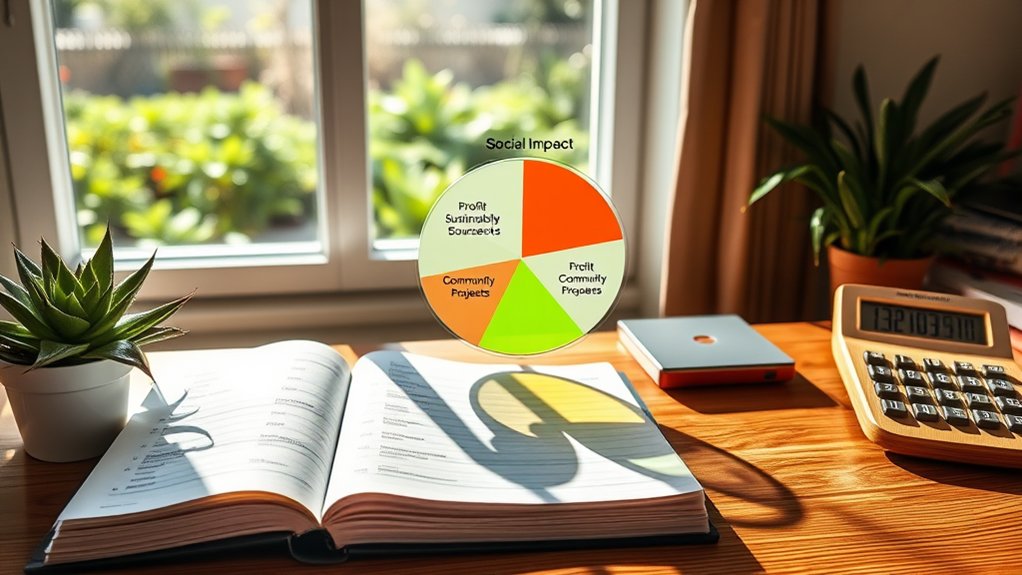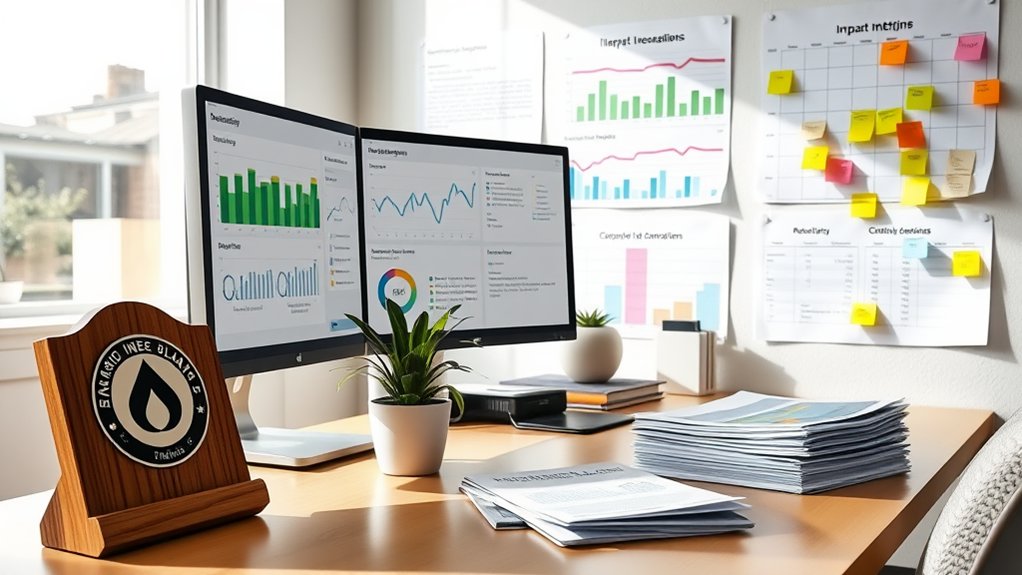To handle bookkeeping for socially responsible businesses, I recommend implementing a dual-track accounting system that captures both financial data and social impact metrics. You’ll need to set up separate ledger accounts for tracking traditional finances alongside environmental initiatives, volunteer hours, and community engagement outcomes. I suggest using specialized software to monitor sustainability metrics like carbon emissions and waste reduction, while maintaining detailed documentation of non-financial contributions. This exhaustive approach positions your business as a leader in sustainable enterprise management, with much more to explore.
Understanding Social Impact Accounting Principles

While traditional accounting focuses primarily on financial performance, social impact accounting expands the scope to measure and report an organization’s effects on society and the environment. I’ve found that mastering these principles requires tracking both quantitative metrics and qualitative outcomes.
To effectively implement social impact accounting, I monitor key performance indicators like carbon footprint reduction, community investment returns, and workforce diversity metrics. I integrate these measurements with standard financial statements to create exhaustive reports that demonstrate both fiscal responsibility and social impact. This dual-focus approach positions your business as a leader in sustainable enterprise.
Setting Up a Dual-Purpose Chart of Accounts
Because social impact businesses need to track both financial and impact metrics, a well-structured chart of accounts becomes essential for meaningful reporting. I’ll show you how to create a dual-purpose system that captures both traditional financial data and social impact measurements.
Start by separating your accounts into two distinct categories: conventional financial accounts and impact-tracking accounts. I recommend using specific number ranges (1000-4999 for financial, 5000-9999 for impact metrics). This separation lets you generate standard financial statements while simultaneously tracking your social impact KPIs, such as carbon offsets, community benefits, or sustainable sourcing percentages.
Documenting Non-Financial Social Contributions

Building on your structured chart of accounts, socially responsible businesses must maintain detailed records of their non-financial contributions to society. I’ll show you how to track and document these essential metrics that demonstrate your company’s social impact, enhancing your brand’s reputation and stakeholder trust.
- Volunteer hours tracking system with monetary value equivalents
- Environmental impact measurements (carbon footprint, waste reduction)
- Community engagement metrics (people served, lives improved)
- Social return on investment (SROI) calculations and documentation
Tracking Environmental and Sustainability Metrics
Since environmental impact directly affects your bottom line and stakeholder relationships, accurate tracking of sustainability metrics is crucial for socially responsible businesses. I recommend tracking key metrics like energy consumption, water usage, waste production, and carbon emissions using specialized software or spreadsheets.
Create separate ledger accounts for environmental initiatives, carbon offset purchases, and sustainable equipment investments. I’ve found that monitoring these metrics monthly helps identify cost-saving opportunities while demonstrating your commitment to sustainability. Link these metrics to financial outcomes by calculating ROI on green investments and quantifying reduced operational costs from efficiency improvements.
Creating Integrated Social Responsibility Reports

While financial statements tell part of your story, integrated social responsibility reports provide a detailed view of your business’s social and environmental impact alongside financial performance. I’ll help you create thorough reports that showcase your organization’s commitment to both profit and purpose.
- Combine quantitative metrics with qualitative narratives to demonstrate your impact
- Include stakeholder feedback and engagement results to build credibility
- Document your supply chain’s social responsibility practices and certifications
- Highlight specific initiatives and their measurable outcomes
When you integrate these elements effectively, you’ll create powerful reports that attract conscious investors, strengthen stakeholder trust, and position your business as a leader in sustainable enterprise. Track your progress systematically and communicate your achievements strategically.









